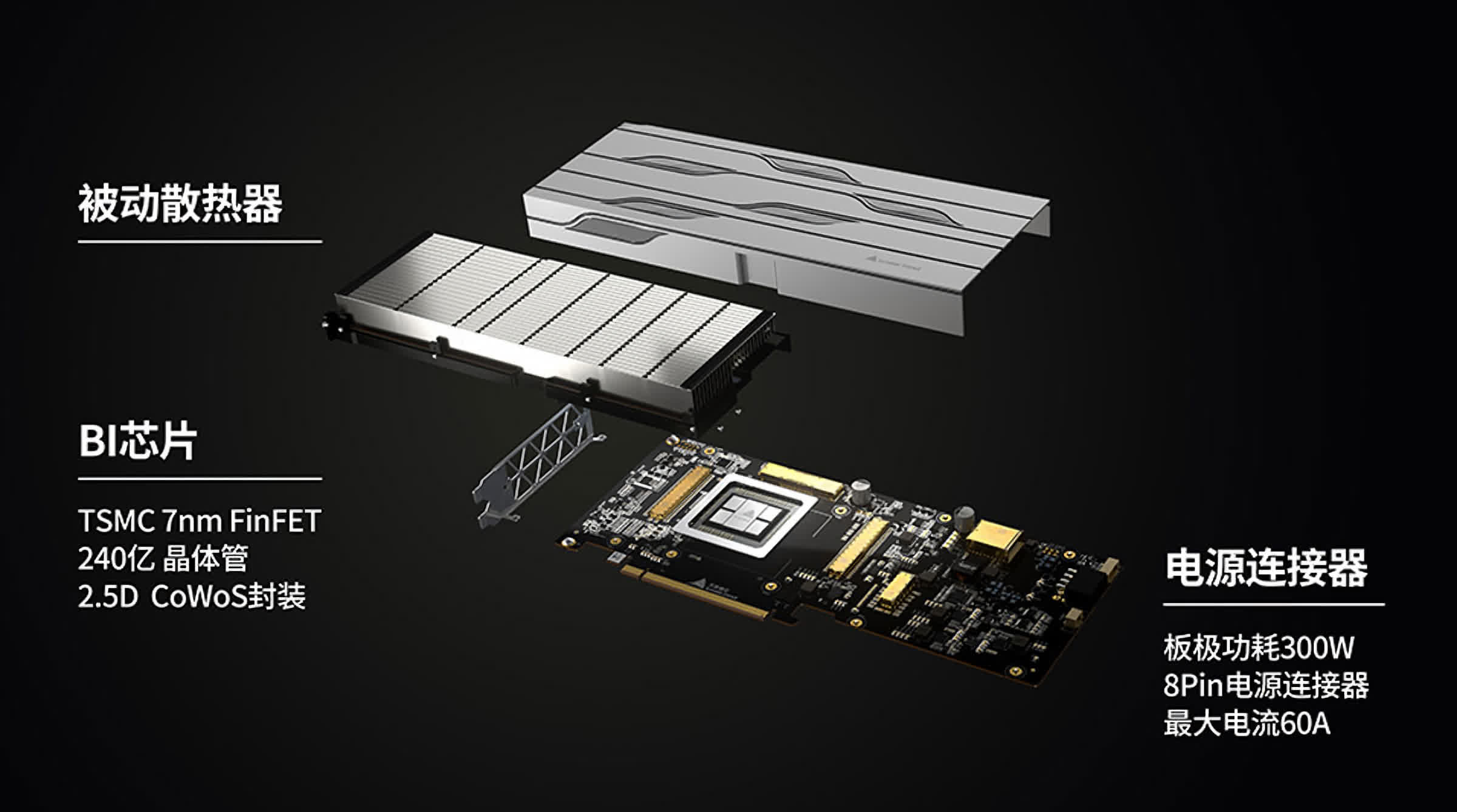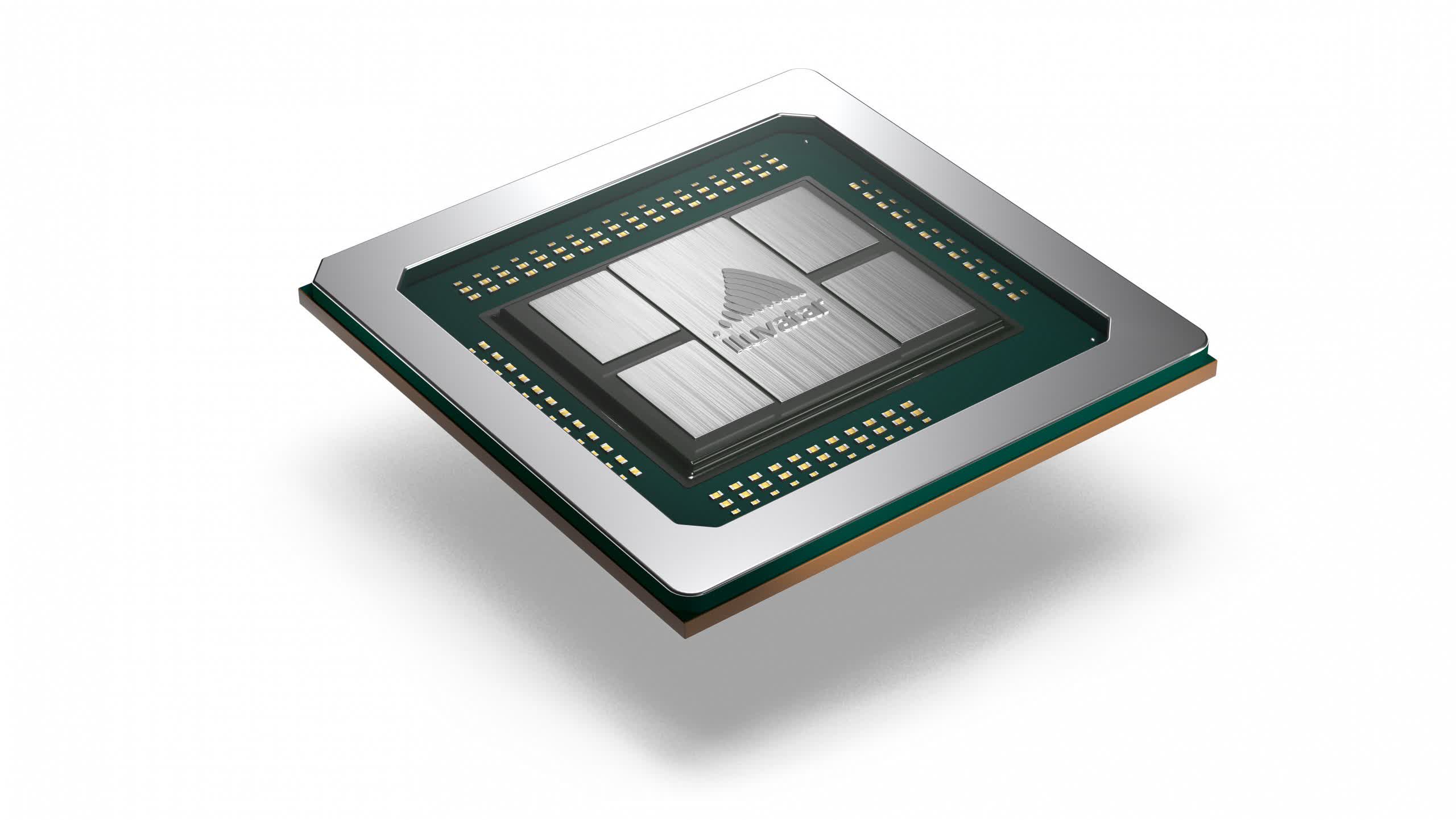In brief: Tianshu Zhixin Semiconductor, a fabless joint venture between Via Technologies and the Shanghai municipal government, has revealed what appears to be China's first 7nm GPGPU, a gargantuan chip that's supposed to compete with the likes of Nvidia A100 and AMD MI100 in the data center.
China is on a quest for "technological self-sufficiency," and the trade war with the US has only accelerated that process. China is capable of covering over 20 percent of the chips needed in the local industry, but the government plans to increase that number to 70 percent by 2025. One example of that is using aging chips while its semiconductor industry catches up, turning to Japan for etching equipment that would otherwise be considered obsolete.
Last year, we saw the arrival of an impressive x86 CPU courtesy of government-backed Zhaoxin, which showed just how much progress has been made on that front. We've also heard about Huawei working hard to develop server GPUs, but things have been relatively quiet ever since the tech giant lost access to key suppliers such as TSMC.

Tianshu Zhixin was known to be making progress on the first general-purpose GPU designed in China, dubbed "Big Island." The ongoing chip shortage only allowed the company to do a paper launch in March, but what's interesting about these chips is that they're supposedly able to compete with Nvidia and AMD's GPU at the highest end.
Big Island GPUs aren't technically designed to go against RTX and Radeon gaming graphics cards, but instead they're geared towards machine learning, high performance computing, medical research, and security. This means they're meant to go against the likes of Nvidia's A100 and AMD's Instinct MI100, both of which are gargantuan chips designed for the data center and offer an order of magnitude the performance of previous generation architectures, while taking a lot less space and power to operate.

Big Island was developed between 2018 and 2020, built using TSMC's 7nm process node and 2.5D CoWoS packaging. They also utilize TSMC's 65 nm silicon interposer, and feature no less than 24 billion transistors. Just like AMD and Nvidia, Tianshu Zhixin has equipped its GPGPU with 32 GB of HBM2 memory (1.2 TB per second bandwidth) and made it compatible with the PCIe 4.0 standard.
The claimed performance of the Chinese GPGPU seems to be impressive. When it comes to FP16 (half precision math) performance, it is capable of 147 teraflops, which sits right between Nvidia A100's 78 teraflops and AMD MI100's 184.6 teraflops – although it should be noted the A100's Tensor cores are capable of 312 FP16 teraflops.
When it comes to FP32 workloads, Big Island should be capable of up to 37 teraflops, which is higher than both the A100 and MI100, which offer 19.5 teraflops and 23.1 teraflops, respectively. Power consumption is rated at 300 watts, and Tianshu Zhixin says the new GPU will offer a better price-to-performance ratio than competing solutions.
Time will tell if this is indeed true and China has hit such an important milestone in its quest to reduce its reliance on foreign semiconductors.
